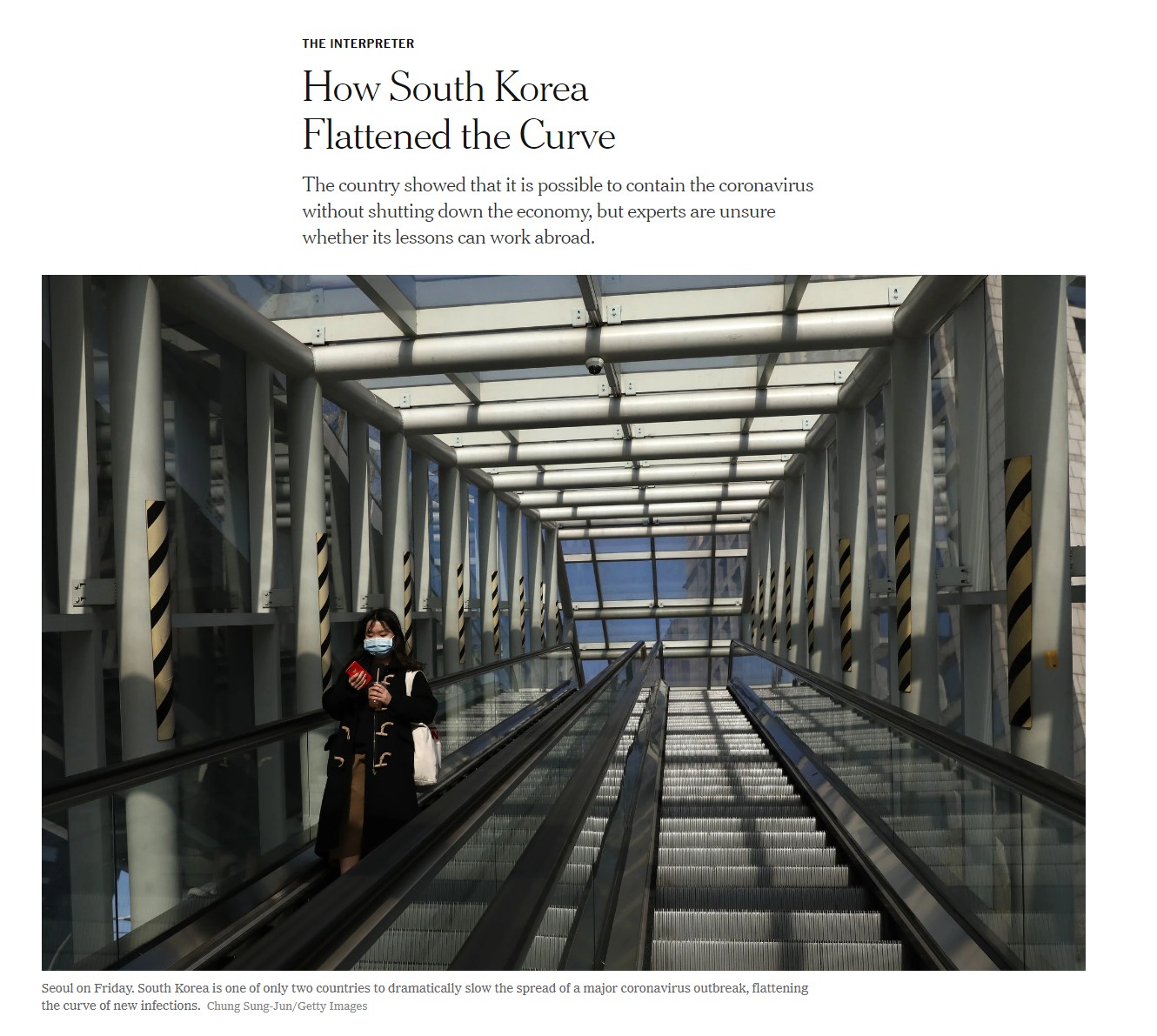How South Korea Flattened the Curve
| Eyes of World |

On Sunday, South Korea reported only 64 new cases, the fewest in nearly a month, even as infections in other countries continue to soar by the thousands daily, devastating health care systems and economies. Italy records several hundred deaths daily; South Korea has not had more than eight in a day.
South Korea is one of only two countries with large outbreaks, alongside China, to flatten the curve of new infections. And it has done so without China’s draconian restrictions on speech and movement, or economically damaging lockdowns like those in Europe and the United States.
The lessons from South Korea, while hardly easy, appear relatively straightforward and affordable: swift action, widespread testing and contact tracing, and critical support from citizens. The head of the World Health Organization, Tedros Adhanom Ghebreyesus, has hailed South Korea as demonstrating that containing the virus, while difficult, “can be done.” He urged countries to “apply the lessons learned in Korea and elsewhere.”
Just one week after the country’s first case was diagnosed in late January, government officials met with representatives from several medical companies. They urged the companies to begin immediately developing coronavirus test kits for mass production, promising emergency approval. Within two weeks, though South Korea’s confirmed cases remained in the double digits, thousands of test kits were shipping daily. The country now produces 100,000 kits per day, and officials say they are in talks with 17 foreign governments about exporting them.
South Korea has tested far more people for the coronavirus than any other country, enabling it to isolate and treat many people soon after they are infected. The country has conducted over 300,000 tests, for a per-capita rate more than 40 times that of the United States.
To spare hospitals and clinics from being overwhelmed, officials opened 600 testing centers designed to screen as many people as possible, as quickly as possible — and keep health workers safe by minimizing contact. At 50 drive-through stations, patients are tested without leaving their cars. At some walk-in centers, patients enter a chamber resembling a transparent phone booth. Health workers administer throat swabs using thick rubber gloves built into the chamber’s walls.
When someone tests positive, health workers retrace the patient’s recent movements to find, test — and, if necessary, isolate — anyone the person may have had contact with, a process known as contact tracing. Health officials would retrace patients’ movements using security camera footage, credit card records, even GPS data from their cars and cellphones. This allows health workers to identify networks of possible transmission early. As the coronavirus outbreak grew too big to track patients so intensively, officials relied more on mass messaging to let the public know about the new cases.
By identifying and treating infections early, and segregating mild cases to special centers, South Korea has kept hospitals clear for the most serious patients. Its case fatality rate is just over one percent, among the lowest in the world.
“This public trust has resulted in a very high level of civic awareness and voluntary cooperation that strengthens our collective effort,” Lee Tae-ho, the vice minister of foreign affairs, told reporters earlier this month. Officials also credit the country’s nationalized health care system, which guarantees most care, and special rules covering coronavirus-related costs, as giving even people with no symptoms greater incentive to get tested.
For all the attention to South Korea’s successes, its methods and containment tools are not prohibitively complex or expensive. Experts cite three major hurdles to following South Korea’s lead, none related to cost or technology. One is political will. Many governments have hesitated to impose onerous measures in the absence of a crisis-level outbreak. Another is public will. Social trust is higher in South Korea than in many other countries, particularly Western democracies. And time poses the greatest challenge. It may be “too late,” Dr. Ki said, for countries deep into epidemics to control outbreaks as quickly or efficiently as South Korea has.